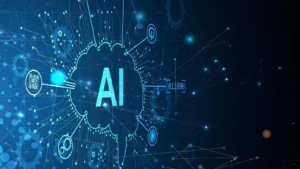Agriculture and farming are among the most traditional professions that still exist today. The progress of technology has revolutionized seed-sowing and harvesting procedures. Furthermore, the widespread use of robotics and analytical instruments has made it easier to inspect yield quality. It has improved a variety of agricultural jobs across the entire food supply chain. Above all, the most recent innovation in artificial intelligence functions by outperforming the human brain. It provides breakthrough statistics and results for a successful expansion.
AI helps in analyzing and estimating data
This modern technology has fully revolutionized the growing, planting, and cultivating functions. It helps the farmers analyze the quality of seeds and predict the weather conditions in a real-time scenario. Along with that, it contributes to presenting the estimates of bountiful yield and makes proper utilization of the resources. It can determine the quality of soil and help in planning for the next yield by counting the data points. Thus, it has renovated the way how earlier agriculture was perceived.
AI supports improving the precision of farm points
AI is used to determine the accuracy level of seasonal forecasting models.It can accurately estimate the climatic pressure in the upcoming months and arrange for the sowing time. The information obtained through AI holds a significant position for farmers in growing and nurturing abundant harvests. In addition to that, AI has been taken to space to analyze the overall condition of crops and inspect the problem in real time. Thus, AI solutions allow the detection of an early-stage problem in crops supported by Deep Learning and Computer vision.
AI helps to improve the precision of farm locations
AI is used to evaluate the accuracy of seasonal forecasting models. It can accurately estimate climatic pressure in the following months and plan for the sowing season. The knowledge collected through AI plays an important role for farmers in cultivating and sustaining big harvests. In addition, AI has been deployed in space to analyze the overall status of crops and inspect the problem in real time. Thus, AI technologies enable the diagnosis of an early-stage problem in crops using Deep Learning and Computer Vision.
AI deals with the loss of employment
During the traditional era, only a few countable persons entered the agricultural industry. This leads to a labor shortage. To address manpower shortages, AI Agricultural ChatBots have taken the place of humans. These bots are more productive and efficient than humans, generating lump sum yields quickly while maintaining quality standards. Beyond that, it reduces labor costs and the possibility of weeds. They will make suggestions and consult with farmers to solve agricultural difficulties. It includes cognitive advancement, which folds the turns and extracts the best from acres to feed a 10 billion-person economy.
AI brings automation to harvesting
Behind the automated harvesting, a supervisor monitors crop movement and tilting growth. It can spray herbicides on the entire field with a speedy process and harvest crops at significant rates. It will maintain the production of crops and enable the laborers to focus on other tasks. For instance, the Harvest CROO Robotics Strawberry robot is designed to harvest and pack strawberries without the involvement of any human factor.
The role of artificial intelligence in the agricultural information management cycle
Managing agricultural data using AI can be advantageous in numerous ways:
Risk management
Predictive analytics helps farmers reduce errors in their procedures.
AI uses plant growth data to recommend crops that are more resistant to adverse weather, disease, and pests.
Soil and crop health analysis.
AI algorithms can examine the chemical composition of soil samples to detect which nutrients may be deficient. AI may help discover and predict crop diseases.
Crop feeding
AI in irrigation can help find optimal crop feeding patterns and nutrient delivery schedules, as well as anticipate the best agronomic product combination. AI can enhance crop production and forecast optimal harvest times.
What is the future of artificial intelligence in agriculture?
AI is likely to play an increasingly important role in agriculture and food sustainability in the future years. Agriculture has always relied heavily on technology, from basic tools to irrigation, tractors, and artificial intelligence. Each advancement has boosted efficiency while minimizing farming obstacles.
Furthermore, the advantages of AI in agriculture are apparent. Smart agricultural technologies, intelligent automation, and AI-powered goods automate repetitive time-consuming processes, freeing up staff to focus on more strategic operations that require human judgment. Increasingly affordable computer vision, combined with agricultural robotics, has the potential to drive AI advances in farming.
Climate change, environmental issues, and rising food consumption all represent challenges that AI can help address. It will transform current agriculture by enhancing efficiency, sustainability, resource allocation, and real-time monitoring, resulting in healthier and higher-quality products.
However, you cannot simply buy AI and start utilizing it. AI is not a tangible object; rather, it is a collection of technologies that have been mechanized through programming. In essence, an AI system thinks in the same manner that people do: it learns first and then solves issues using data. The industry will need to alter to accommodate the AI-driven transformation of agriculture. Farmers should be educated and schooled on how to employ AI-powered solutions.
Advantages of AI in agriculture
Until recently, using the terms AI and agriculture in the same phrase may have been weird. After all, agriculture has been the backbone of human society for millennia, supplying nutrition while also contributing to economic progress, whereas even the most primitive AI arose only a few decades ago. Nonetheless, creative concepts are being presented in all industries, including agriculture. In recent years, the world has seen tremendous advances in agricultural technology, which have transformed farming techniques. Climate change, population increase, and resource scarcity all pose threats to the sustainability of our food system, making these advancements increasingly important. Introducing AI addresses several issues and helps to mitigate many of the downsides of traditional farming.
Data-driven decisions.
The modern world revolves around data. Organizations in the agriculture sector use data to acquire detailed insights into every aspect of the farming process, from understanding each acre of a field to monitoring the entire food supply chain to acquiring deep insights into yield generation processes. AI-powered predictive analytics is already making its way into agribusinesses. Artificial intelligence allows farmers to collect and process more data in less time. Additionally, AI can analyze market demand, estimate pricing, and calculate the best periods for sowing and harvesting.
Artificial intelligence in agriculture can analyze soil health, monitor weather, and recommend fertilizer and pesticide applications. Farm management software increases both output and profitability, allowing farmers to make better decisions at each stage of the crop-growing process.
Cost Savings
Farmers are constantly striving to improve their farm yields. Precision agriculture, when combined with AI, can help farmers grow more crops while using fewer resources. AI in agriculture combines the best soil management practices, variable rate technologies, and the most effective data management practices to maximize yields while reducing costs.
AI in agriculture offers farmers real-time crop insights, allowing them to determine which areas require irrigation, fertilization, or pesticide treatment. Vertical agriculture, an innovative farming approach, can boost food output while conserving resources. As a result, herbicide use is reduced, harvest quality improves, earnings increase and costs are significantly lowered.
Automation’s impact
Labor shortages in agriculture are not uncommon. Fortunately, automation provides a solution that eliminates the need to hire more workers. While mechanization reduced agricultural chores that required superhuman sweat and draft animal labor to jobs that took only a few hours, a new wave of digital automation is once again revolutionizing the industry.
Examples of automated farm machinery include driverless tractors, smart irrigation, and fertilization systems, IoT-powered agricultural drones, smart spraying, vertical farming software, and AI-based greenhouse robots for harvesting. AI-driven equipment outperforms human farm workers in terms of efficiency and accuracy.
Challenges of AI in Agriculture
Many people believe that AI solely relates to the digital realm and has no relation to actual farming operations. This belief is typically based on a misunderstanding of AI tools. Most people, particularly those in non-technological industries, do not fully comprehend how AI in agricultural biotechnology works, resulting in delayed AI adoption throughout the agricultural industry. Even though agriculture has witnessed numerous advancements throughout the years, many farmers still use traditional methods. The great majority of farmers are unlikely to have participated in projects involving AI technology.
Furthermore, Swayam Infotech providers frequently fail to clearly describe the advantages of new technology and how to adopt them. Technology suppliers must put in a lot of effort to assist people in understanding how AI may be used in agriculture. Given the benefits of artificial intelligence for sustainable farming, using this technology may seem like an obvious move for any farmer. There are still some obstacles to overcome.
Large upfront fees.
While AI solutions can be cost-effective in the medium to long term, there’s no denying that the initial expenditure can be prohibitively pricey. With many farms and agribusinesses struggling financially, implementing AI may be hard for the time being, particularly among small-scale farmers and those in developing nations. However, the cost of establishing AI farms may decrease as technology advances. Businesses can also investigate funding options such as government subsidies or private investment.
Reluctance to adopt new technologies and processes
Unfamiliarity makes individuals cautious to adopt new technology, making it difficult for farmers to completely embrace AI, even when the benefits are clear. Resistance to innovation, along with an unwillingness to try new techniques, stifles the development of farming practices and the sector’s overall profitability. Farmers must recognize that artificial intelligence (AI) is simply a more advanced version of basic technologies for field data processing. To persuade agricultural laborers to adopt AI, the public and private sectors should offer incentives, resources, and training. Governments must also create the rules necessary to reassure workers that technology is not a threat.
Lack of practical experience with new technologies
Technological advancements in the agriculture industry vary around the world. Some locations could reap the full benefits of AI, but there are some challenges in countries where next-generation agricultural equipment is rare. Technology businesses that want to conduct business in rising agricultural economies may need to be more proactive. In addition to their products, they must provide training and continuing assistance to farmers and agribusiness owners who are eager to implement innovative solutions.
A protracted technological adoption process
In addition to a lack of knowledge and experience, the agriculture sector lacks the infrastructure required for AI to function. Even farms with some technology in place may struggle to move forward. AgTech suppliers and software enterprises face similar challenges in terms of infrastructure. One of the most effective methods to combat this is to approach farmers gradually, for example, by first offering the use of simpler technology, such as an agricultural trade platform. Once farmers become accustomed to a less sophisticated solution, providers can add additional tools and capabilities, resulting in fully AI-powered farms.
Technological limits
Because AI is still emerging, the technology will have limitations. Accurate models require broad, high-quality data, which might be scarce in agriculture. Limitations in sensor-equipped robots can make it difficult to adjust to changing farming situations. To overcome these constraints, continual study and data analysis are required. Farmers should also be active in decision-making rather than completely delegating control to AI. Monitoring AI decisions manually is likely to be beneficial in the early phases of adoption.
Conclusions
Agriculture and food production are among humanity’s most important industries. Agriculture’s first products are utilized as inputs in numerous multi-factor distributed supply chains, which include four clusters or stages of the supply chain (preproduction, production, processing, and distribution) before reaching the final user or customer.
________________________________________________________________________-
Bio: Hello, I am matthew I am an experienced content writer.







Comments are closed.